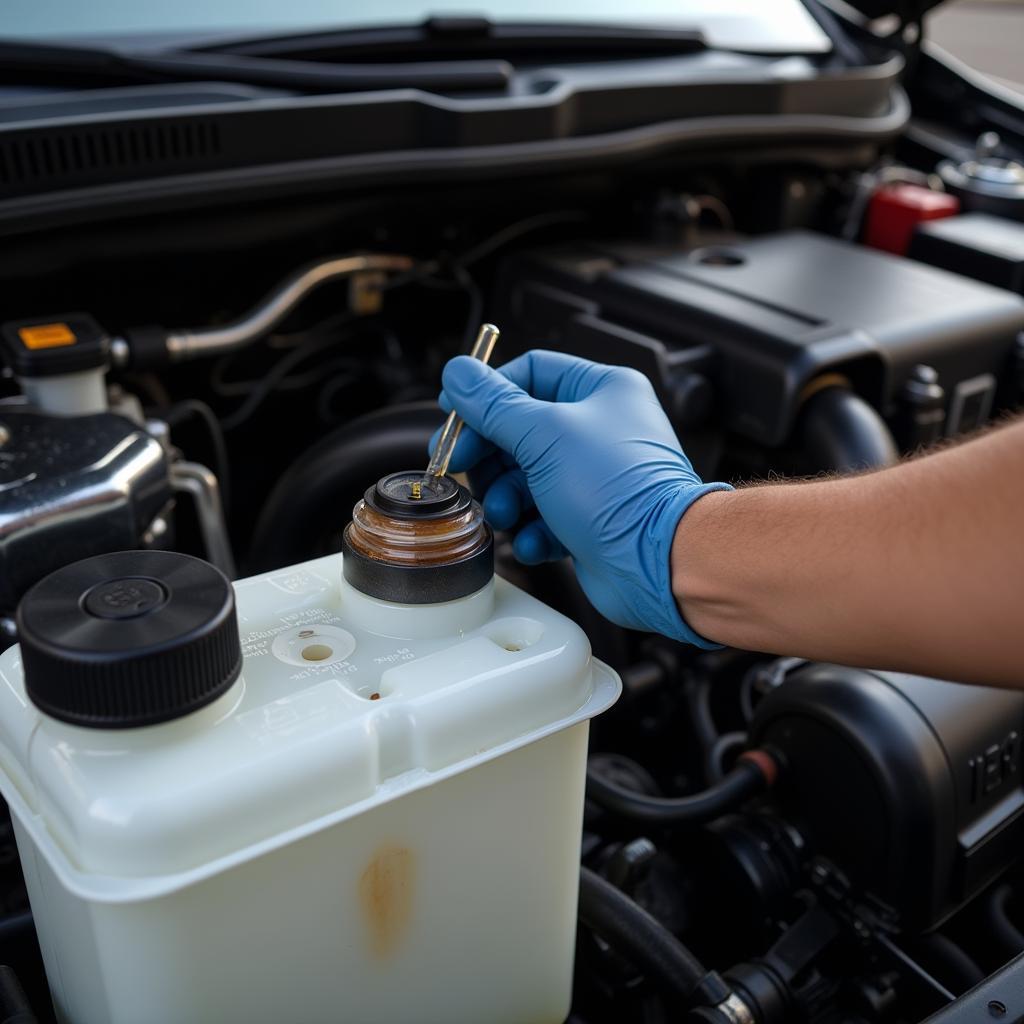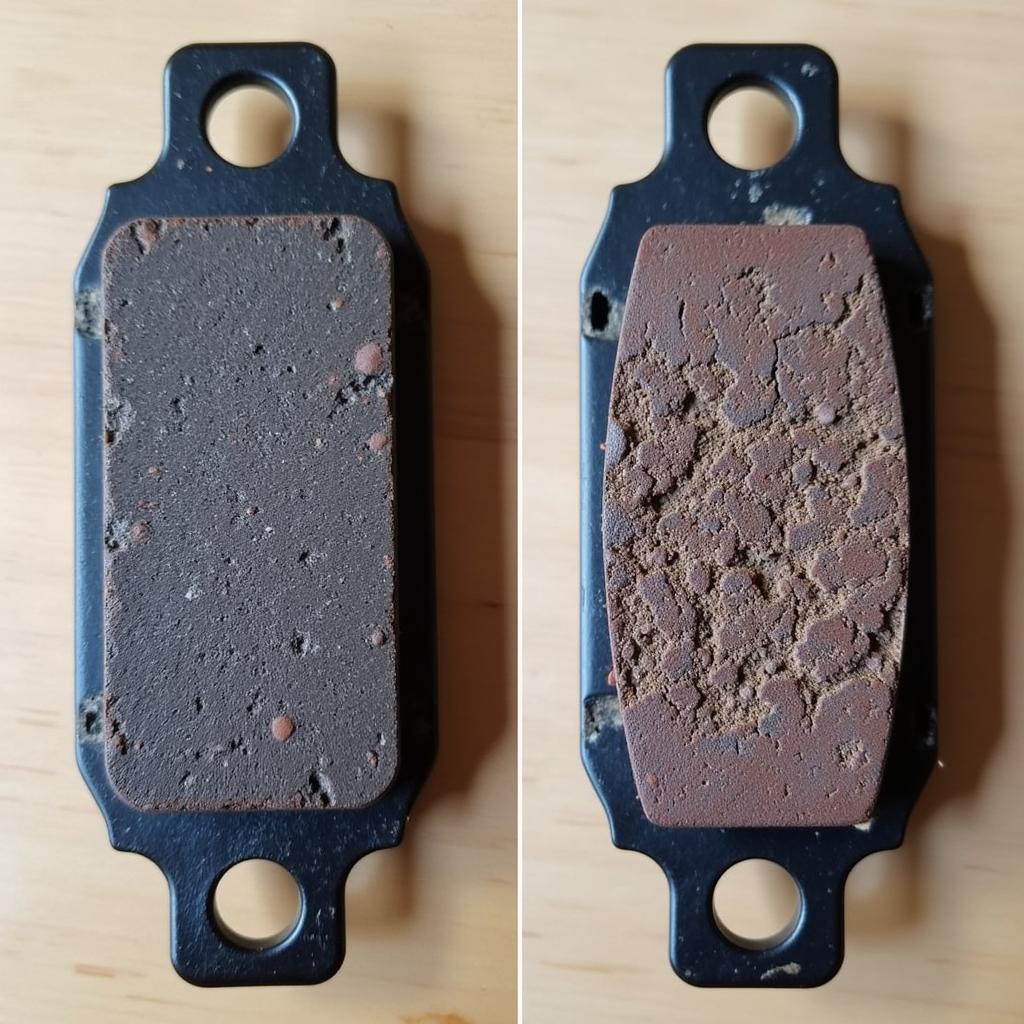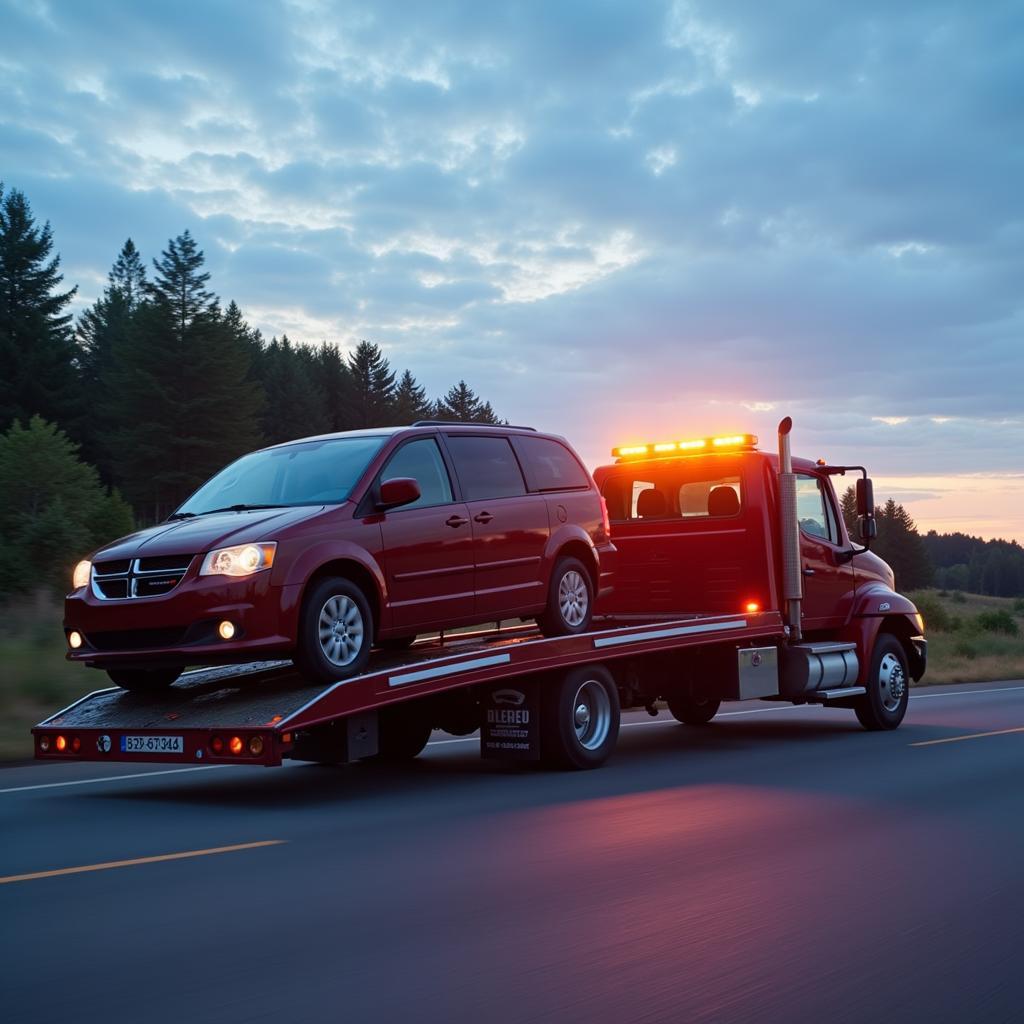The red brake warning light on your dashboard is a critical safety indicator that should never be ignored. It signifies a problem within your braking system that requires immediate attention. Whether it’s a simple issue like low brake fluid or a more serious concern like complete brake failure, understanding the potential causes and knowing how to address them is vital for your safety and the well-being of your vehicle.
This comprehensive guide explores the common reasons behind a red brake warning lamp illumination, helps you diagnose the potential issue, and provides guidance on the appropriate actions you should take.
Understanding the Red Brake Warning Lamp
Your car’s braking system is designed with redundancy in mind, often featuring dual braking circuits to ensure stopping power even if one circuit fails. The red brake warning light typically illuminates for two primary reasons:
- Low Brake Fluid: This is the most common culprit. Brake fluid is the lifeblood of your braking system, transferring force from the brake pedal to the wheels. A drop in brake fluid level indicates a leak in the system, which needs immediate attention.
- Engaged Parking Brake: While seemingly obvious, it’s easy to overlook. If your parking brake is even slightly engaged, the red brake warning light might illuminate.
Diagnosing the Issue
 Inspecting Brake Fluid Reservoir
Inspecting Brake Fluid Reservoir
When the red brake warning light comes on, the first step is to determine if it’s due to low brake fluid or an engaged parking brake.
- Check Your Parking Brake: Ensure your parking brake is fully disengaged. If the light disappears, the issue is resolved.
- Inspect Brake Fluid Level: If the parking brake isn’t the problem, it’s time to check your brake fluid level. Locate the brake fluid reservoir in your engine bay (refer to your owner’s manual for the exact location). Most reservoirs have translucent plastic, allowing you to visually inspect the fluid level.
- If the fluid level is low: This indicates a leak in your brake system, requiring immediate professional attention.
- If the fluid level is adequate: And the light persists, it signifies a more serious problem within the braking system, demanding a professional diagnosis.
Common Causes of Red Brake Warning Light
Apart from low brake fluid and an engaged parking brake, several other factors can trigger the red brake warning light:
1. Worn Brake Pads
 Worn Brake Pads Comparison
Worn Brake Pads Comparison
Brake pads wear down over time due to friction. Most vehicles have a wear indicator, a small metal tab that makes a screeching sound when the pads are thin, alerting you to get them replaced. However, a malfunctioning wear indicator or ignoring the screeching sound can lead to the brake pad wearing down completely, triggering the warning light.
2. Leaking Brake Lines or Hoses
Your brake system relies on a network of lines and hoses to transmit brake fluid. Over time, these components can deteriorate, crack, or become loose, leading to brake fluid leaks.
3. Faulty Brake Caliper
Brake calipers house the brake pads and pistons. A sticking or seized caliper piston can prevent the brake pads from properly releasing, generating excess heat and potentially causing the brake fluid to boil, triggering the warning light.
4. ABS System Malfunction
Modern vehicles come equipped with Anti-lock Braking Systems (ABS), designed to prevent wheel lockup during hard braking. A malfunctioning ABS module or sensor can trigger the red brake warning light.
“A red brake warning light should never be taken lightly,” says Jake Carter, a seasoned automotive engineer with over 20 years of experience. “It’s a clear signal that your vehicle’s most crucial safety system needs immediate attention. Ignoring it puts you and others at risk.”
What to Do When the Red Brake Warning Light Illuminates
 Tow Truck Transporting Car
Tow Truck Transporting Car
- Pull Over Safely: If the red brake warning light comes on while driving, safely pull over to the side of the road as soon as possible.
- Assess the Situation: Check your parking brake and visually inspect your brake fluid level.
- Seek Professional Help: If the brake fluid level is low or you suspect any other brake system issues, do not attempt to drive further. Contact a qualified mechanic or tow your vehicle to a trusted repair shop for a thorough inspection and repair.
Ignoring the Red Brake Warning Light: The Risks
Driving with an illuminated red brake warning light is incredibly risky and can lead to:
- Complete Brake Failure: This is the most severe consequence, potentially leading to a serious accident.
- Increased Stopping Distance: Even if your brakes haven’t completely failed, a compromised system will significantly increase the distance required to stop.
- Expensive Repairs: Ignoring a minor issue like a small leak can lead to more extensive and costly damage to your entire braking system.
Conclusion
The red brake warning lamp is a critical safety indicator that should never be ignored. Addressing the issue promptly and seeking professional help ensures your safety and keeps your vehicle in optimal condition. Remember, a properly functioning braking system is paramount for your well-being on the road.

